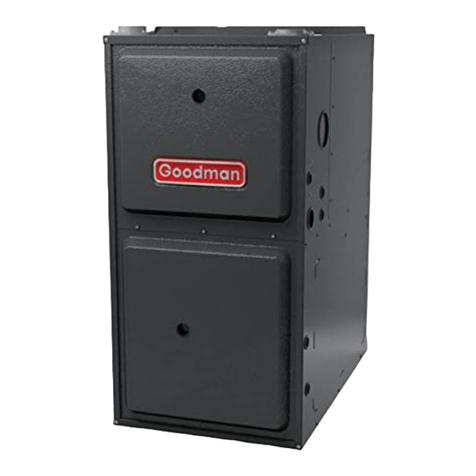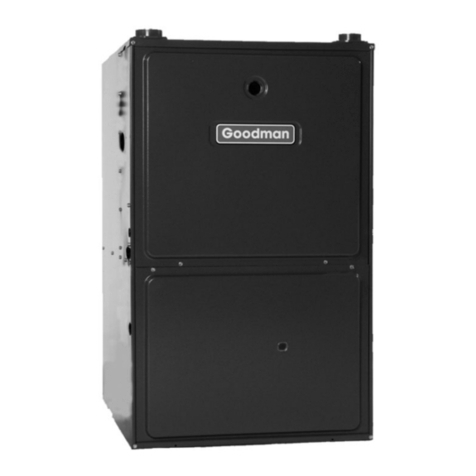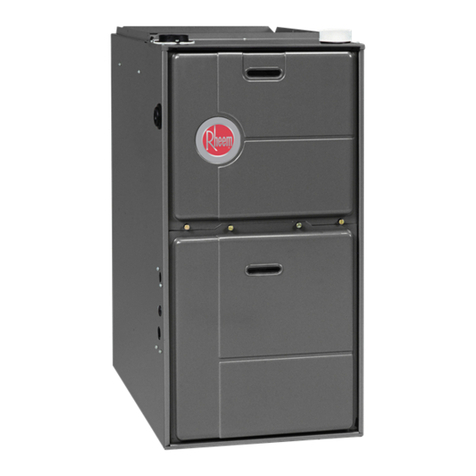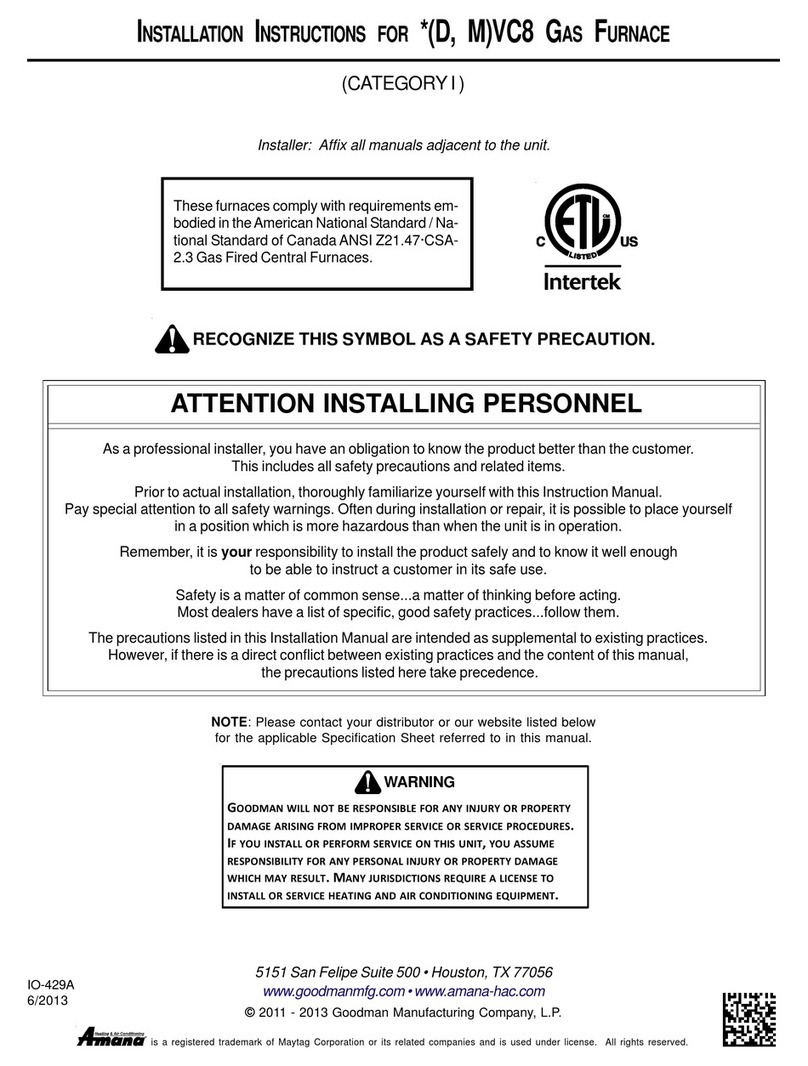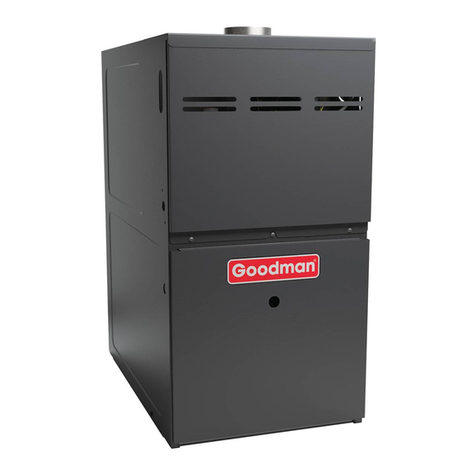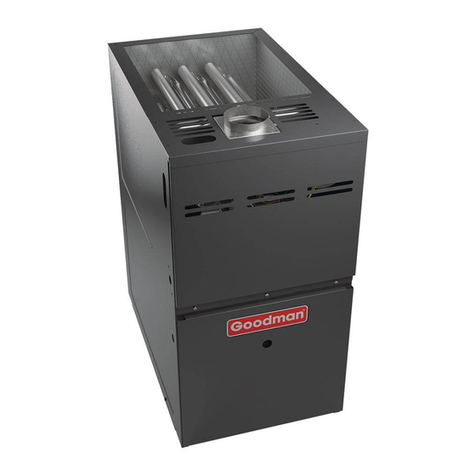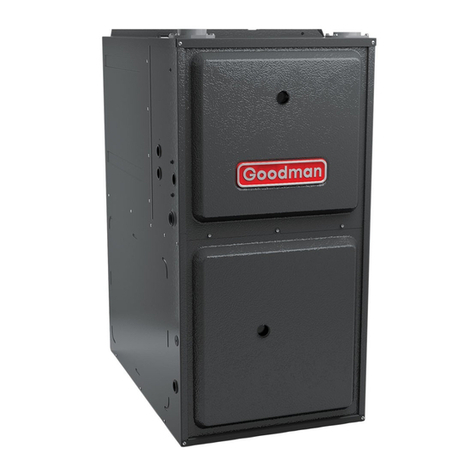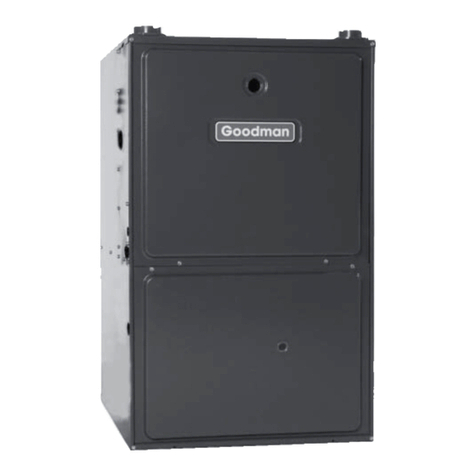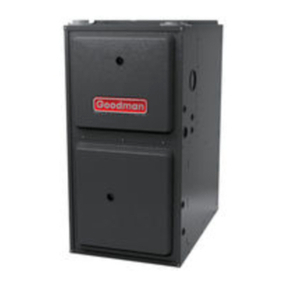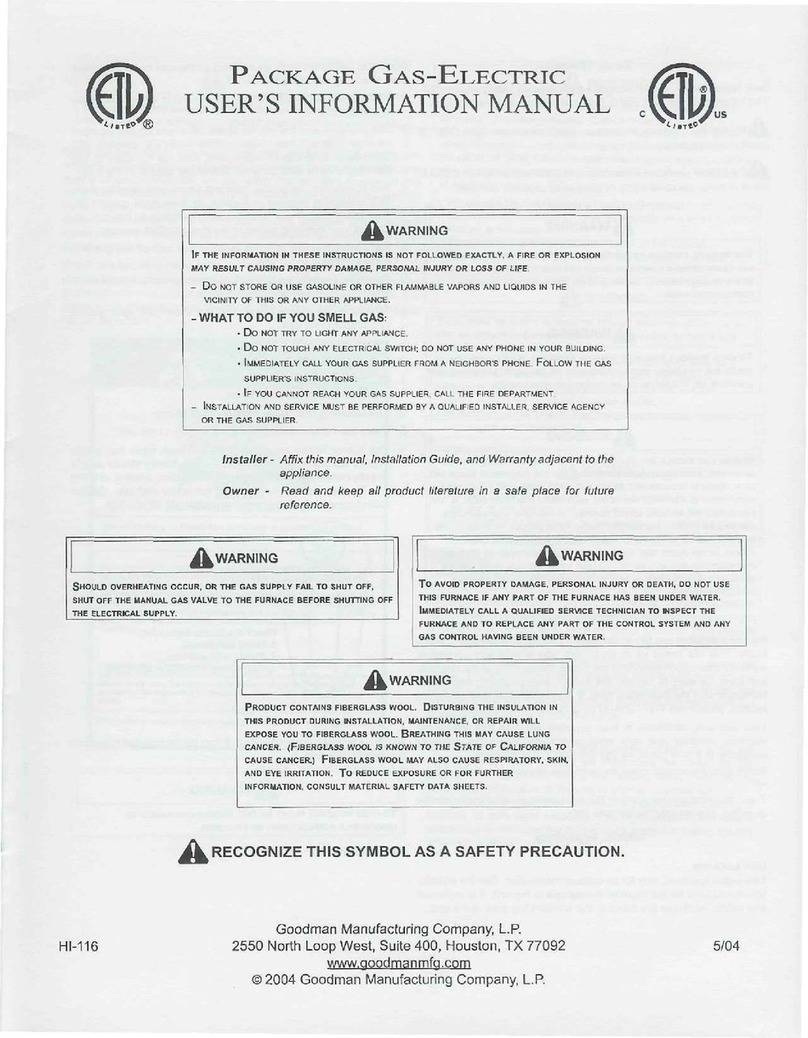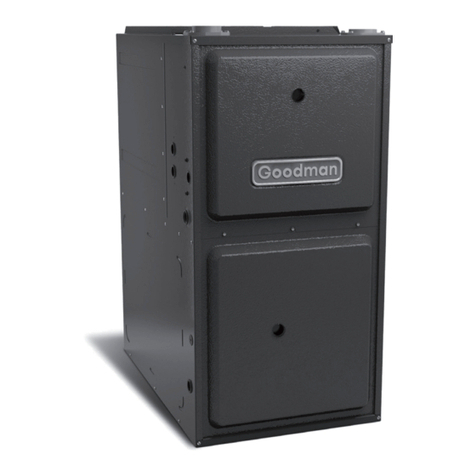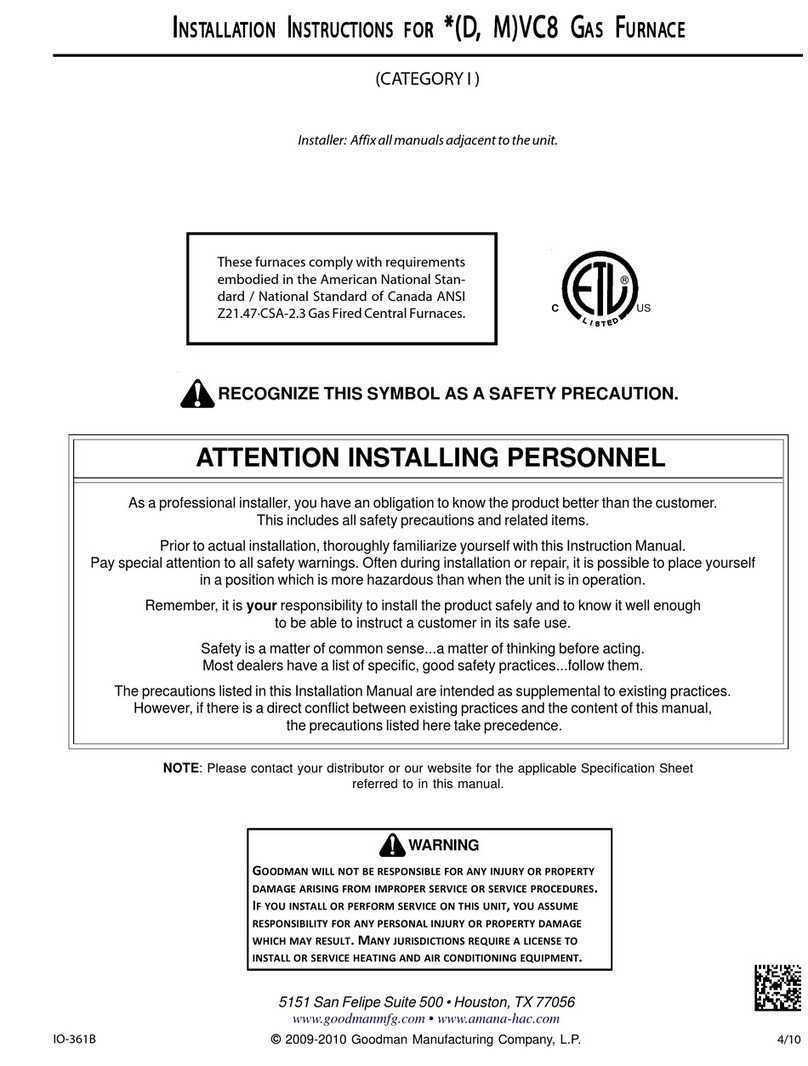
5
T
O
PREVENT
PERSONAL
INJURY
OR
DEATH
DUE
TO
ASPHYXIATION
,
THIS
FURNACE
MUST
BE
C
ATEGORY
I
VENTED
.D
O
NOT
VENT
USING
C
ATEGORY
III
VENTING
.
P
ROVISIONS
MUST
BE
MADE
FOR
VENTING
COMBUSTION
PRODUCTS
OUTDOORS
THROUGH
A
PROPER
VENTING
SYSTEM
.T
HE
LENGTH
OF
FLUE
PIPE
COULD
BE
A
LIMITING
FACTOR
IN
LOCATING
THE
FURNACE
.
WARNING
ADDITIONALSAFETYCONSIDERATIONS
• ThisfurnaceisapprovedforCategoryIVentingonly.
• Provisions must be made for venting combustion
products outdoors through a proper venting system.
The length of flue pipe could be a limiting factor in
locatingthefurnace.
SHIPPINGINSPECTION
All units are securely packed in shipping containers tested
according to International Safe TransitAssociation specifica-
tions. The carton must be checked upon arrival for external
damage. Ifdamageisfound,arequestforinspectionbycarrier’s
agent must be made in writing immediately.
Thefurnacemustbecarefullyinspectedonarrivalfor damage
and bolts or screws which may have come loose in transit. In
theeventofdamagetheconsigneeshould:
1. Makeanotationondeliveryreceiptofanyvisibledamage
toshipment or container.
2. Notifycarrierpromptly and request an inspection.
3. Withconcealeddamage, carriermustbe notifiedassoon
aspossible - preferably within five days.
4. Filetheclaimwiththefollowingsupportdocumentswithin
a nine month statute of limitations.
• Original or certified copy of the Bill of Lading, or
indemnitybond.
• Originalpaidfreight bill or indemnity inlieuthereof.
• Originalorcertifiedcopyoftheinvoice,showingtrade
andother discounts or reductions.
• Copy of the inspection report issued by carrier’s
representativeatthetimedamageisreportedtocarrier.
Thecarrieris responsibleformakingpromptinspection ofdam-
ageandforathoroughinvestigation ofeachclaim.The distribu-
torormanufacturerwillnotaccept claimsfromdealersfortrans-
portationdamage.
Keep this literature in a safe place for future reference.
ELECTROSTATIC DISCHARGE(ESD)PRECAUTIONS
NOTE: Dischargebody’sstaticelectricity before touching unit.
Anelectrostaticdischargecanadverselyaffectelectricalcom-
ponents.
Use the following precautions during furnace installation and
servicing to protect the integrated control module from dam-
age. Byputtingthe furnace, the control, andtheperson at the
sameelectrostaticpotential,thesestepswillhelpavoidexpos-
ing the integrated control module to electrostatic discharge.
Thisprocedureisapplicabletoboth installed and non-installed
(ungrounded)furnaces.
1. Disconnect all power to the furnace. Do not touch the
integrated control module or any wire connected to the
control prior to discharging your body’s electrostatic
chargetoground.
2. Firmly touch a clean, unpainted, metal surface of the
furnaces near the control. Any tools held in a person’s
handduringgroundingwillbedischarged.
3. Service integrated control module or connecting wiring
following the discharge process in step 2. Use caution
nottorecharge your body with staticelectricity;(i.e., do
notmove or shuffle your feet,donot touch ungrounded
objects,etc.). Ifyoucomeincontact withanungrounded
object,repeat step 2 beforetouching control or wires.
4. Discharge your body to ground before removing a new
control from its container. Follow steps 1 through 3 if
installing the control on a furnace. Return any old or
new controls to their containers before touching any
ungroundedobject.
TOTHE INSTALLER
Before installing this unit, please read this manual thoroughly
to familiarize yourself with specific items which must be ad-
hered to, including but not limited to: unit maximum external
static pressure, gas pressures, BTU input rating, proper elec-
tricalconnections,circulatingairtemperaturerise,minimumor
maximum CFM, and motor speed connections, and venting.
ThesefurnacesaredesignedforCategoryIventingonly.
IMPORTANTNOTETOTHEOWNERREGARDINGPRODUCT
WARRANTY
Your warranty certificate is supplied as a separate document
withtheunitinstalledby yourcontractor. Read the limited war-
ranty certificate carefully to determine what is and is not cov-
eredandkeep the warrantycertificateinasafe place.Ifyouare
unable to locate the warranty certificate please contact your
installingcontractororcontactcustomerservice(877-254-4729)
to obtain a copy.
IMPORTANT: ToreceivetheLifetimeHeatExchangerLimited
Warranty(goodforaslongasyou own your home) and the 10-
year Parts Limited Warranty, online registration must be com-
pleted within 60 days of installation. Online registration is not
required in California or Quebec. Complete warranty details
availablefrom your local dealer or, for Goodman®brandprod-
ucts,visitwww.goodmanmfg.com,and forAmana®brandprod-
ucts,visit www.amana-hac.com.
To register your Goodman®brand unit, go to
www.goodmanmfg.comandclick“WarrantyRegistration”.Com-
pletetheregistration as prompted.
ToregisteryourAmana®brandunit,go towww.amana-hac.com
and click on “Warranty Registration”. Complete the registra-
tionas prompted.
